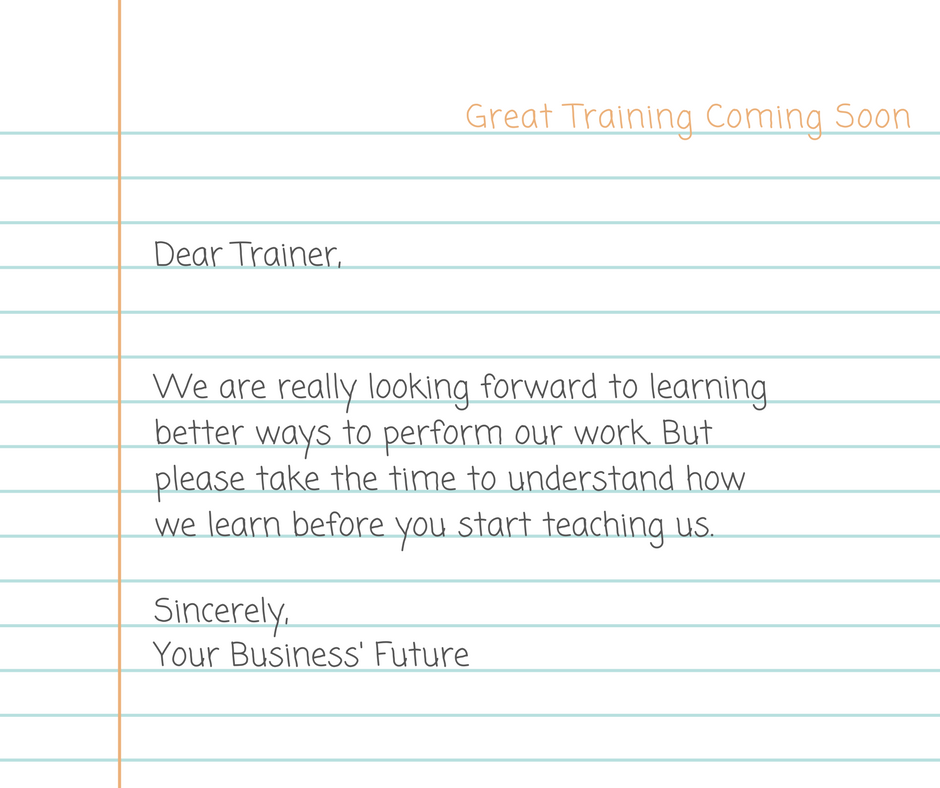 Training is important for business success. Developing yourself as a business leader is critical. Ensuring that your employees are growing in their skills and learning well is essential. If you disagree with any of these statements stop reading now. If you agree, read on as I describe another key element of great training programs.
Training is important for business success. Developing yourself as a business leader is critical. Ensuring that your employees are growing in their skills and learning well is essential. If you disagree with any of these statements stop reading now. If you agree, read on as I describe another key element of great training programs.
For the first key element, see my recent post: “Great Training Programs Start with Excellent Hiring Strategies.”
Great Training Programs are Process Driven
Let me ask you a question. Would you mow your lawn before putting gas in your lawn mower, checking the oil and starting it? No, you wouldn’t that. That’s silly. There is a process for mowing, which includes filling the tank, checking the oil, and starting the mower. You might skip checking the oil. You shouldn’t, but you might. If you have a small yard or an electric mower, you might not fill the gas tank every time. But you will start the mower. You will follow the standard process for mowing the yard.
So, why would you approach your self-development and that of your team without a process? Many leaders do. But successful leaders follow a process proven for success.
Training Processes Starts with Knowing How People Learn
I recently meet with my Mastermind group, and one of the members mentioned a key to his sales success: his ability to discern how a person learns. The group questioned him on this, and as the discussion continued, something clicked in my brain. Note the power of Mastermind groups. Great ideas usually come from collective thinking not from a single mind.
His comment sparked the idea that the same principle applies to training. I know, that’s basic, but when did you last tailor a training event to the learning style of the participants? Let’s go one step further. When did you last think about your learning style when planning personal development?
The fact of the matter is learning style or preference impacts our ability to learn. The good news is most people learn in different ways. Furthermore, they learn different concepts through different styles.
A good example is an auditory learner studying geography. Even though she prefers to learn by hearing, she will grasp the lesson on geography better if she sees the map too. A tactile learner may enjoy getting up and touching the map.
Take an Inventory of Your Team’s Learning Styles
Because you are reading this blog, I know you care about learning and development. So, let me encourage you to take some time to inventory your team’s learning style today.
There are many inventory assessments available, but you can start with the basics. Here is a question to ask:
Do your team members prefer to learn a new task by:
- Studying a diagram with pictures and graphics (visual)
- Listening to a speaker or teacher (auditory)
- Saying or writing instructions in their own words (verbal)
- Digging in and doing it (physical)
- Reading a book or article (visual)
- Figuring out the process and systems involved (logical)
- Working with others in a group to learn (social)
- Working alone to learn (intra-personal)
As you can see, I’ve listed seven learning styles. Each style has implications for how you teach. In the future, I will write about those implications and what they mean for your training program. For now, be observant, get to know your team better, and try different ways to help them learn.
